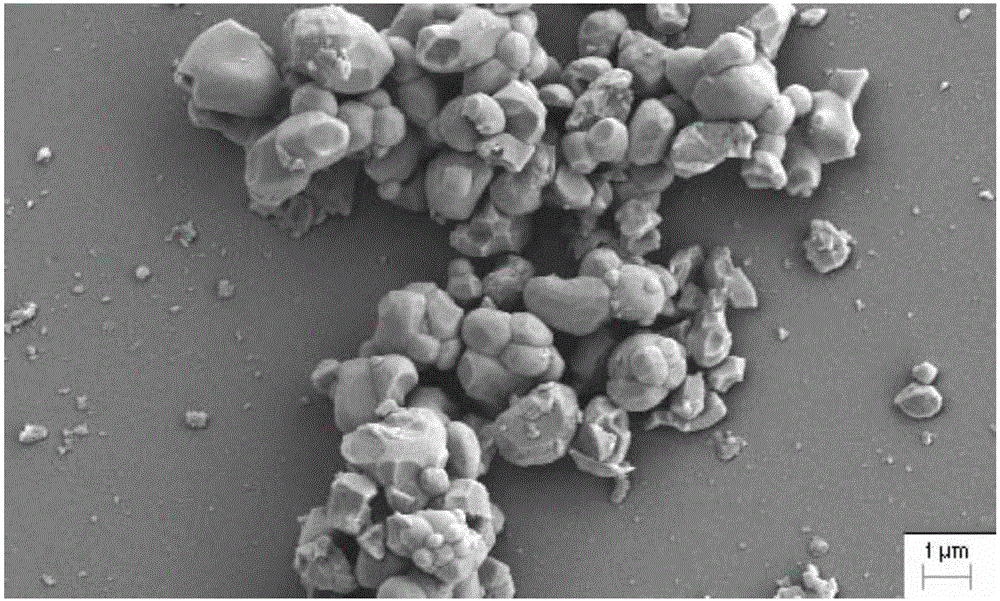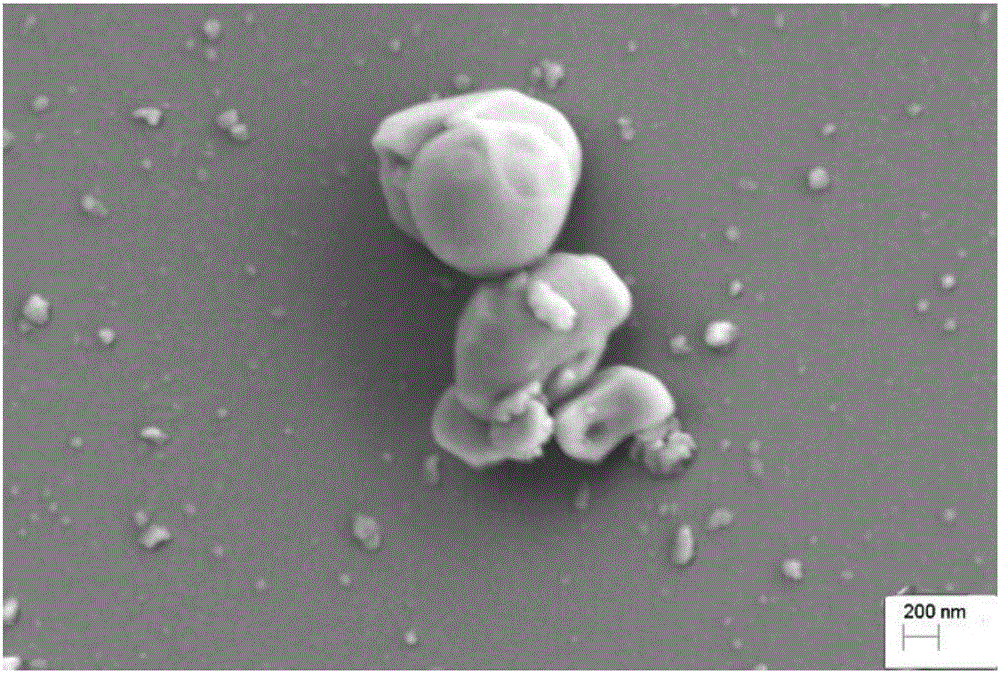Method for degrading organic wastewater by means of lithium cobalt phosphate active hydrogen monosulfate
A technology of bisulfate and organic wastewater, applied in chemical instruments and methods, chemical/physical processes, special compound water treatment, etc., can solve the problems of environmental secondary pollution, increase treatment costs, cobalt ions cannot be recycled, etc. Achieve the effects of reducing the cost of acid-base adjustment, short reaction time, and easy recycling and reuse
- Summary
- Abstract
- Description
- Claims
- Application Information
AI Technical Summary
Problems solved by technology
Method used
Image
Examples
Embodiment 1
[0044] Comparison of the removal rate of DEP in organic wastewater under three methods.
[0045] (1) Add lithium cobalt phosphate and potassium monopersulfate:
[0046] In the heterogeneous reaction of potassium monopersulfate catalyzed by lithium cobalt phosphate, an Erlenmeyer flask was used as a reactor to treat 200 mL of organic wastewater with an initial concentration of DEP of 5.0 mg / L. After adding 300mg / L potassium monopersulfate to the reaction bottle, the pH is 3.5, then add 100mg / L lithium cobalt phosphate, and place the reaction bottle in a vibrating shaker with a rotation speed of 180rpm and a temperature of 25°C.
[0047] (2) Add lithium cobalt phosphate alone, do not need to add potassium monopersulfate, and other conditions are the same as (1).
[0048] (3) Potassium monopersulfate is added separately, no need to add lithium cobalt phosphate, and other conditions are the same as (1).
[0049] The removal rates of DEP in organic wastewater obtained under the t...
Embodiment 2
[0055] The effect of different dosages of lithium cobalt phosphate on the removal rate of DEP.
[0056] (1) In the heterogeneous reaction using lithium cobalt phosphate to catalyze the activation of potassium monopersulfate, an Erlenmeyer flask is used as a reactor to treat 200 mL of organic wastewater with an initial concentration of DEP of 5.0 mg / L, and add single pass Potassium bisulfate, pH is 3.5, simultaneously adds cobalt lithium phosphate to obtain organic wastewater solution in reaction flask, makes the concentration of potassium monopersulfate and cobalt lithium phosphate in organic wastewater solution be 300mg / L and 50mg / L respectively , and finally the reaction bottle was placed in a vibrating shaker with a rotation speed of 180 rpm and a temperature of 25°C.
[0057] (2) Only when adding lithium cobalt phosphate, adjust the dosage of lithium cobalt phosphate so that the final concentration in the organic wastewater solution is 100mg / L, and other conditions are the...
Embodiment 3
[0067] Effects of different dosages of potassium monopersulfate on activation and degradation of DEP.
[0068] (1) In the heterogeneous reaction using lithium cobalt phosphate to catalyze the activation of potassium monopersulfate, an Erlenmeyer flask is used as a reactor to treat 200 mL of organic wastewater with an initial concentration of DEP of 5.0 mg / L, and add single pass Potassium bisulfate, pH is 4.2, simultaneously in reaction bottle, add lithium cobalt phosphate to obtain organic wastewater solution, make the concentration of potassium monopersulfate and lithium cobalt phosphate in organic wastewater solution be 100mg / L and 50mg / L respectively , and finally the reaction bottle was placed in a vibrating shaker with a rotation speed of 180 rpm and a temperature of 25°C.
[0069] (2) Only when adding potassium monopersulfate, adjust the dosage of potassium monopersulfate so that the final concentration in the organic wastewater solution is 550mg / L, and the other conditi...
PUM
 Login to View More
Login to View More Abstract
Description
Claims
Application Information
 Login to View More
Login to View More - R&D
- Intellectual Property
- Life Sciences
- Materials
- Tech Scout
- Unparalleled Data Quality
- Higher Quality Content
- 60% Fewer Hallucinations
Browse by: Latest US Patents, China's latest patents, Technical Efficacy Thesaurus, Application Domain, Technology Topic, Popular Technical Reports.
© 2025 PatSnap. All rights reserved.Legal|Privacy policy|Modern Slavery Act Transparency Statement|Sitemap|About US| Contact US: help@patsnap.com



